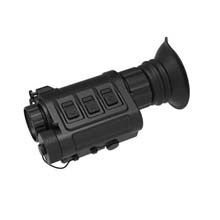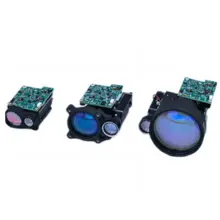Top 5 Reasons You Need a Thermal Camera for Home Inspection

Home inspection is a critical process when it comes to buying, selling, or maintaining a home. It allows homeowners to identify potential problems or areas that need improvement, providing valuable information on the condition of the property. A thermal camera is a useful tool for a home inspection that can help homeowners identify issues that may not be visible to the naked eye. Thermal cameras work by detecting temperature differences in the environment. These temperature differences are then displayed on the camera's screen as a visual representation of the object's heat signature. This makes it possible to detect temperature variations in various materials, including walls, floors, ceilings, and electrical systems.
Here are some of the top reasons why you need a thermal camera for a home inspection:
1. Detecting energy loss
Thermal cameras are excellent at detecting energy loss, which can help homeowners reduce their energy bills and make their homes more comfortable. The camera can identify areas where energy is escaping, such as poorly insulated walls, doors, and windows. What's more, after repairs or improvements have been made, a thermal imaging camera can also be used to verify that the work has been completed correctly. For example, if the insulation has been added to the walls, the thermal imaging camera can be used to check for any areas where insulation may be missing or has been improperly installed. With this information, homeowners can take steps to improve their home's insulation, sealing leaks, and cracks, leading to significant savings on energy costs.

With a thermal imaging camera, you can see the continuous infiltration of cold air through the cracks in the door
2. Identifying moisture intrusion or roof leaks
Moisture intrusion is a common problem in homes that can lead to significant damage to the structure and health problems. A thermal camera can easily detect moisture intrusion in walls, floors, and ceilings, allowing homeowners to identify the source of the problem and take corrective action. This can help prevent further damage and the growth of harmful mold and mildew. What's worse, roof leaks are a significant problem, leading to water damage and also mold growth. With a thermal imaging camera, you can easily identify areas where the roof is leaking, even if there are no visible signs of damage. This can help prevent further damage and ensure that the roof is repaired promptly.

Use the cold spot or hot spot on the wall with a thermal camera to judge the water seepage
3. Finding electrical faults
Electrical faults are a significant hazard in homes, leading to fires and other dangerous situations. A thermal camera can detect hotspots in electrical systems, which could be a sign of overloaded circuits, faulty wiring, or other issues. Identifying these issues early can help prevent fires and other dangerous situations.

If the circuit in the house is overloaded, it can also be checked out with thermal imaging in time to avoid greater safety accidents.
4. Detecting pests
Pests such as rodents and termites can cause extensive damage to a home's structure. A thermal camera can identify these pests by detecting their body heat, allowing homeowners to take the necessary steps to eliminate the pests before they cause any further damage. This can save homeowners thousands of dollars in repairs and ensure the safety of their homes.

Thermal cameras can see pests in the dark that hide as soon as the lights are turned on
5. Identifying HVAC issues
A thermal camera can detect temperature variations in HVAC systems, indicating potential issues such as clogged filters, duct leaks, or malfunctioning components. Identifying these issues early can help prevent costly repairs or replacements and ensure that the HVAC system is functioning correctly, providing a comfortable living environment.

Thermal cameras for smartphones are great for home HVAC inspections
In conclusion, a thermal camera is an excellent investment for homeowners who want to ensure the safety, comfort, and efficiency of their homes. By detecting issues such as energy loss, moisture intrusion, electrical faults, pests, roof leaks, HVAC issues, and verifying repairs, they provide valuable information that can help homeowners take the necessary steps to prevent further damage and ensure their homes are in good condition. So, if you're considering a home inspection or want to keep your home in top shape, a thermal camera is a must-have tool that you won't regret investing in.

















